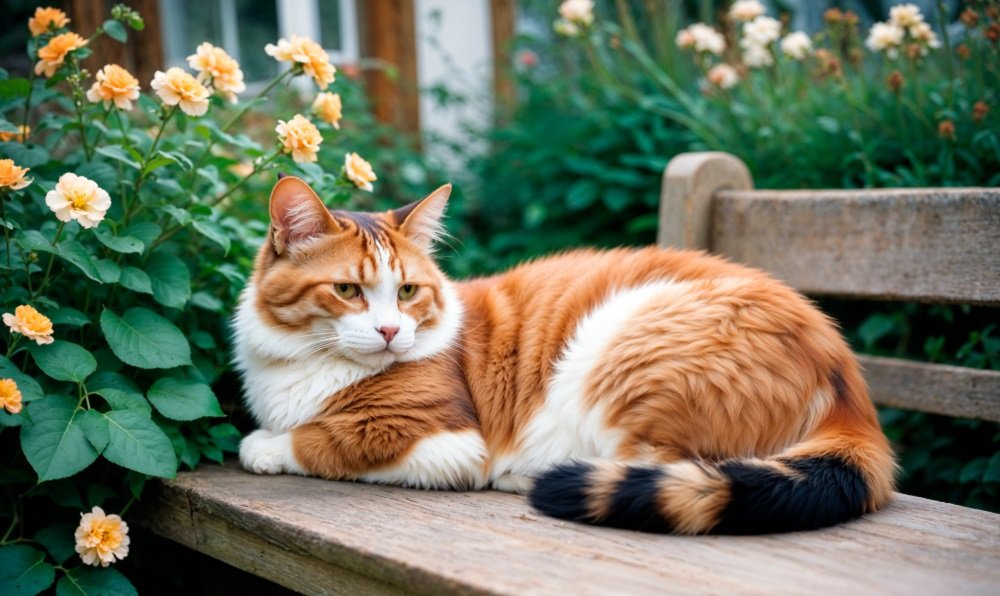Understanding the complex ways animals communicate is fascinating, and cats, with their enigmatic nature, often leave us wondering about their inner thoughts and feelings. While they may not laugh in the same way humans do, cats do express amusement and enjoyment through a variety of vocalizations and body language.
How Do Cats Express Amusement?
Although we may not hear a hearty “ha-ha” from our feline friends, cats have their own unique ways of showing they’re finding something amusing.
Vocalizations
One telltale sign of a happy and entertained cat is a soft, chirping sound. This gentle “purr-like” trill often accompanies playful interactions or when a cat is observing something interesting.
Body Language
Beyond vocalizations, cats use their bodies to convey their amusement. A relaxed posture, twitching tail, and playful batting at toys or objects are all indicators that your cat is enjoying themselves.
How Do Cats Laugh?
Cats are fascinating creatures known for their enigmatic nature and independent spirits. While they may not express emotions in the same way humans do, their vocalizations and body language offer intriguing glimpses into their inner world. One question that often arises among cat lovers is: do cats laugh?
The answer, while not a simple yes or no, is a nuanced exploration of feline communication. Unlike human laughter, which is a complex social response often triggered by humor, a cat’s “laugh” is more akin to a playful chirp or a soft purr. These sounds, while seemingly joyful, serve different purposes and are not necessarily indicative of amusement. (See Also: Why Are My Cats So Staticy)
Understanding Feline Vocalizations
Cats communicate primarily through a variety of vocalizations, each conveying a specific message. To decipher a cat’s “laugh,” it’s crucial to understand the context and accompanying body language.
Chirps and Trills
A soft, bird-like chirp or trill is often associated with excitement, anticipation, or even a greeting. Cats may chirp when they see their favorite human, spot a toy, or are eager for attention. This sound can be accompanied by a relaxed posture, a twitching tail, and playful pawing.
Purring
While often associated with contentment, purring can also occur in other situations, such as when a cat is stressed or in pain. However, a playful purr, often accompanied by kneading and head bunting, suggests a happy and relaxed state.
Chattering
A rapid, clicking sound known as chattering is typically made when a cat is observing prey, such as birds or squirrels, from a distance. It’s a frustrated expression of their hunting instincts.
The Playful Side of Cats
Play is an essential part of a cat’s life, both physically and mentally. During play, cats engage in behaviors like chasing, pouncing, and batting at toys. These activities help them develop their hunting skills, build muscle, and release pent-up energy. It’s during these playful moments that cats may emit chirps, trills, or purrs, which can be interpreted as expressions of joy and excitement.
Signs of Playfulness
- A relaxed and loose body posture
- A twitching or swishing tail
- Ears that are forward and alert
- Dilated pupils
- Playful vocalizations, such as chirps or trills
Decoding the “Laugh”
While cats don’t laugh in the same way humans do, their chirps and purrs during play can be interpreted as expressions of enjoyment and engagement. These sounds, coupled with their playful body language, suggest that cats experience a sense of pleasure and satisfaction during these interactions. (See Also: What Deters Raccoons But Not Cats)
It’s important to remember that every cat is an individual, and their vocalizations and behaviors may vary. Some cats are more vocal than others, and their “laughs” may sound different. By observing your cat’s overall body language and context, you can gain a better understanding of what they are trying to communicate.
Conclusion
The question of whether cats laugh is a complex one that delves into the intricacies of feline communication. While they don’t possess the same capacity for humor as humans, their chirps, trills, and purrs during play can be seen as expressions of joy, excitement, and engagement. By understanding the context and accompanying body language, we can gain a deeper appreciation for the unique ways in which our feline companions express themselves.
Frequently Asked Questions About Cat Laughter
Do cats actually laugh?
While cats don’t laugh in the same way humans do, they do make a sound that resembles a purr-like chuckle. This sound is often made when they are feeling happy, content, and playful.
What does it mean when a cat makes a chirping or trilling sound?
These sounds are often associated with excitement and anticipation. Cats might chirp or trill when they see something they want, like a toy or their favorite person, or when they are greeting you.
Why do cats knead with their paws?
Kneading is a behavior cats learned as kittens when they would knead their mother’s belly to stimulate milk flow. As adults, they may knead on soft surfaces like blankets or laps as a sign of contentment and relaxation. (See Also: When Do Cats Start To Mellow Out)
Can cats purr when they are not happy?
While purring is often associated with happiness, cats can also purr when they are stressed, in pain, or even when they are dying. It’s a complex sound that can have multiple meanings depending on the context.
How can I tell if my cat is truly happy?
Look for a combination of positive signs like purring, slow blinking, relaxed body posture, playful behavior, and seeking out attention. If your cat seems content and enjoys your company, they are likely happy.


